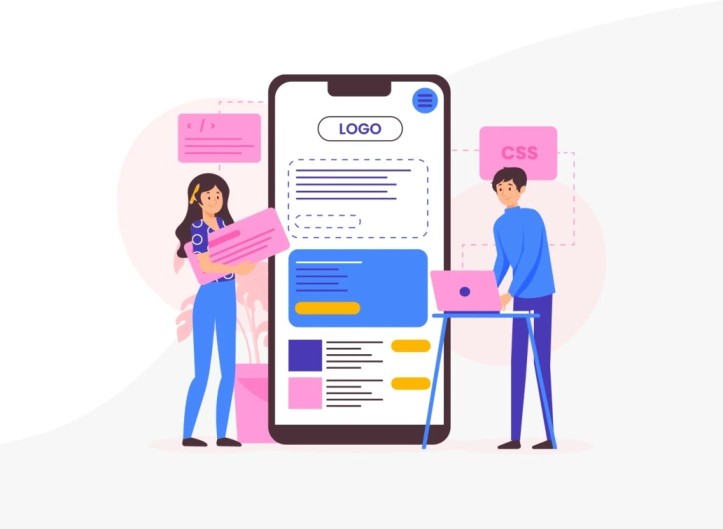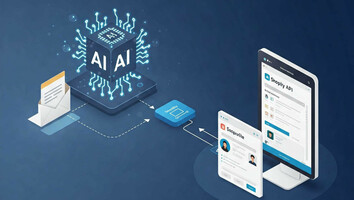The creation of a solid front end is difficult. Scaling front-end development to accommodate multiple teams working on a large and complex project at once is substantially more challenging. Microservices have grown in popularity recently, although monolithic backends have been around for a while.
A micro frontend is a set of components for modern web projects that may be independently developed by numerous teams using a variety of tech stacks and frameworks.
What are Micro Frontends?
Micro Frontends, a theoretical extension of microservices to the front end, seeks to address the "monolithic app" issue that so many businesses face. Micro frontends are designed with the idea that a web application is made up of features controlled by various independent teams. The end-user still receives the benefits of a SPA because of this architectural pattern, which divides monolithic SPAs into smaller apps that can be built, tested, and deployed independently.
Micro frontend benefits for business
Here are the top five advantages of a micro frontend design for process-driven application development.
-
Small and maintainable code
By breaking up the entire product into groups of little features, you can create several tiny web applications using micro frontend development. Each of these apps will have its unique code, and each app will be in charge of achieving particular commercial objectives. Each micro app becomes compact and controllable as a result, which has the added advantage of making testing simple.
-
Independent deployment
The breadth and complexity of deployment are significantly reduced when a limited set of functionalities may be deployed independently of other modules. Each micro frontend app can have its own CI pipeline that builds, tests, and deploys it into production with distinct repositories. A team that develops and manages the micro frontend can release the app development into production even if other micro apps have functionality that isn't implemented or is broken since each micro frontend is decoupled from other components of the website.
-
Independent and Focused Team
We can have a team that is responsible for a limited set of features (a micro frontend app) throughout the entire software development lifecycle with decoupled repos and release cycles (SDLC). The staff feels empowered and autonomous as a result, which helps them work efficiently and swiftly. This means that rather than focusing on a technical aim, each team can be connected to a commercial purpose. In doing so, each team becomes laser-focused on a predetermined set of attainable goals with little conflict and reliance on other teams.
-
Newer Technologies
Micro frontends are made up of several tiny components and can be developed utilizing a wide range of various technology stacks. This talent is incredibly potent. The first team can be broken into multiple smaller groups depending on expertise in different tech stacks thanks to the single responsibility approach. It is simpler to hire fresh developers for mobile app development because multiple technology stacks will be employed on the same project.
-
Incremental updates
It's fairly typical for businesses to have sizable frontends that are built on outdated technology. Similar to microservices, using micro frontends gives businesses the ability to divide huge operations into smaller independent apps and gives them the freedom to choose the best tech stack for the task at hand. This facilitates the creation, updating, and implementation in line with shifting business requirements. Additionally, it may be done incrementally and allows several tech stacks to coexist in the same app development.
Who Benefits from Adopting Micro Frontends?
-
App Developers
For mobile app development teams, micro apps are a game-changer. These teams directly profit from micro frontend benefits including decreased maintenance requirements, quicker and more efficient development cycles, and decreased complexity when making changes.
App developers can adopt a more iterative strategy by using containers to store codebases and isolate micro applications from one another. This makes it possible for developer teams to provide software continuously while emphasizing efficient design and short user journeys.
-
Engineering Leaders
The coordination of the integration of various micro apps into a single user experience is the responsibility of software developers. In a monolithic front end, engineering leaders are entrusted with managing development teams to ensure that testing, development, and other procedures don't disrupt the entire application—a time-consuming chore that deters them from other valuable duties.
-
Enterprise Executives
Over the course of the micro frontend's life, optimized expenditure and expense reduction—including maintenance costs and app development costs—will boost ROI.
Frontend capabilities and design won't be a constraint as the organization works toward its growth objectives thanks to the micro frontend's nimble and scalable design. Leaders can be certain that their front-end application will help them achieve their objectives as they plan and carry out their company strategy.
-
End Users & Customers
Successful end-user engagement depends on consistent, user-friendly design. This program is divided into numerous components by the micro front end, but the modular structure allows a composable architecture to provide a consistent, seamless user experience.
Micro apps can create a multi-experience user journey that outlines and supports the smaller trips occurring within the bigger experience. Development teams must have a thorough awareness of client journeys, as well as the personas and paths that the micro frontend development serves, to reap this benefit. But when done right, the outcome is a much more responsive, interesting, and unique consumer experience.
Conclusion
This approach is being utilized by an increasing number of businesses, and it is anticipated that other well-known front-end applications will adopt it shortly. Micro frontends may be the next big thing in front-end development. They are a modern architectural strategy that can benefit large web development projects built on microservices in several ways.



